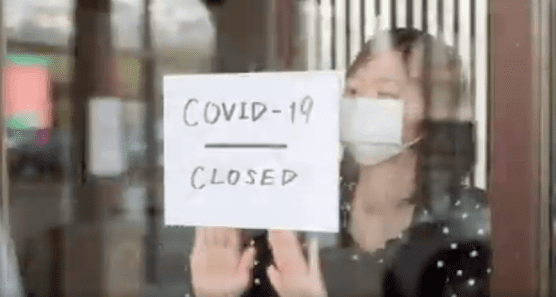The Los Angeles County Department of Workforce Development, Aging and Community Services (WDACS) released an in-depth report Tuesday on the economic impacts of COVID-19 and the most viable pathways for recovery for the County’s industries, workers, and communities.
For the first time, the report identifies that L.A. County lost 437,000 jobs in 2020, will have 354,000 fewer living wage jobs in 2021 compared to the pre-pandemic economy, and that 738,672 living wage jobs need to be created for the entire L.A. County workforce to achieve a satisfactory standard of living.
The full 50-page report, entitled “Pathways for Economic Resiliency: Los Angeles County 2021-2026,” may be downloaded here. A shorter 18-page executive summary is available here.
The report was commissioned by WDACS and was drafted by the nonprofit Los Angeles County Economic Development Corporation (LAEDC). It is designed to inform investment by L.A. County to restore economic health and address inequalities that existed before the COVID-19 pandemic by providing a data-driven foundation for equitable recovery strategies. The report provides recommendations to address the pandemic’s toll on the L.A. County economy, including strategies to improve equity, retrain workers for well-paying industries, bolster capital and support services for small business, and close education and access gaps that are limiting prosperity and growth.
“This pandemic has had a disproportionate impact on women, people of color, and households with lower incomes. As a former U.S. Secretary of Labor who worked to bring this nation out of the depths of the Great Recession, I know that the County of Los Angeles’ response to a post-COVID economy must be infused with equity and targeted to help those who are hurting the most,” said Los Angeles County Board of Supervisors Chair Hilda L. Solis, Supervisor to the First District. “For many years, LA County has prioritized equity and helping the most vulnerable populations in our communities. Later today, I am bringing forth a motion to the Board of Supervisors that, if passed, will act quickly to implement many of this report’s recommendations. If approved, the motion will enable L.A. County to lay a foundation for better jobs and a higher quality of life for all.”
“The LAEDC report on the impact of COVID-19 on our small businesses and workforce reaffirms the need for urgent action, with a focused attention on communities of color and minority and women owned businesses,” said Supervisor Holly J. Mitchell. “While we continue to protect the health of our communities we must also safely put in place the recommendations shared for workforce development trainings, small business support and strategies for attracting family sustaining jobs in order to create an equitable recovery.”
“In every crisis, we try to find an opportunity,” said Supervisor Sheila Kuehl. “L.A. County has lost a devastating number of jobs, but, in planning our recovery, we can, and should, prioritize investments in small and minority-owned businesses, stabilize workforce housing, develop job training in sectors that we know will continue to grow, expand childcare because it’s so essential for working parents, and move toward providing universal broadband access.”
“Low income workers, people of color, and women have borne the brunt of the economic pain of this pandemic,” said Supervisor Janice Hahn. “When we rebuild, we must keep them in mind and build a modern economy that works for our workers and that allows families in Los Angeles County to not just get by, but thrive.”
“As Los Angeles County continues to face the repercussions of the COVID-19 pandemic, we must consider all opportunities to strengthen and improve our economy,” said Supervisor Kathryn Barger, whose 5th District includes the Santa Clarita Valley. “Swift action is needed to help workers, businesses, and organizations navigate the impacts of the public health crisis and ensure we emerge stronger and more resilient than before.”
“The report’s recommendations set a foundation for a 21st Century workforce that is built on equity and living wages,” said Otto Solórzano, Acting Director of L.A. County WDACS. “COVID-19 exacerbated existing inequities in our society: people of color, women, less educated workers, and those without savings all experienced a harsher impact. Thank you to Supervisor Solis for bringing forward a motion today that charts a path to a brighter, more equitable, and sustainable future for all L.A. County workers.”
Some of the report’s findings include:
– As of September 2020, employment in L.A. County was down 9.8% compared to 2019. Of the 716,000 L.A. County jobs lost in March and April 2020, only 28.7% (213,000) of these jobs had returned by the end of September 2020.
– Unemployment in L.A. County was largely driven by layoffs in industries not deemed essential, especially those employing lower skilled workers, such as hospitality, retail, and personal care.
– Of those filing for unemployment insurance in California, 65.3% were people of color, 56.9% had an education attainment of high school or lower, and female workers filed for unemployment at a rate that is 6.4% higher than males.
– Younger workers (who generally have the least savings of any age group) had the highest rates of filing for unemployment: 28.1% of young workers ages 25-34 filed for unemployment, compared to rates under 18% for workers over 35.
– The racial wealth gap widened: in California, 37.6% of Black workers, 26.3% of Hispanic workers, and 22% of white workers filed for unemployment during the pandemic. 88% of Black workers with a high school education in California filed for unemployment.
– 20% of communities lack broadband access, most often in communities of color with high unemployment rates.
– From February 2020 to November 2020, it was estimated that over 20,000 Los Angeles County residents became homeless.
– Over 25% of people experiencing homelessness have no prior employment experience; of those who did have employment experience prior to COVID-19, two of their top four employment industries were retail and food service – which were heavily impacted by COVID-19.
– 62% of businesses in L.A. County have less than two months cash on hand.
– An estimated 15,000+ businesses have already permanently closed because of the pandemic, with tens of thousands of businesses at risk of permanent closure.
The report identifies responses that not only fuel economic recovery, but also address underlying inequity that existed prior to 2020, including the following partial list of recommendations:
– Prioritize training programs and related funding measures (such as Measure J) to put displaced workers on career pathways with strong hiring forecasts, and target growth industries such as healthcare (such as in Supervisorial Districts 1 and 5), construction (such as in Supervisorial Districts 1 and 2), and warehousing/transportation (Supervisorial District 4).
– Develop employer-driven programs at training facilities and/or at community colleges that focus on in-demand skills.
– Invest in small and minority-owned businesses with grants, rental assistance, housing vouchers, and transitional housing targeting most impacted populations (such as in Supervisorial Districts 2, 4, and 5) and women-owned businesses (such as in Supervisorial District 3).
– Support businesses that were closed due to the pandemic to re-start their old business or launch a new one with start-up grants and training programs (notably Supervisorial Districts 1, 2, and 4).
– Prioritize access to broadband internet utilizing subsidies and regional infrastructure to improve access to work-from-home jobs and remote learning.
– Expand childcare access through vouchers, provider grants, and new services including transportation, so that more parents from traditionally disadvantaged communities have the option to work and earn income.
– Expand awareness of the Safer at Work LA campaign to help businesses to open with less COVID-19 transmission risk to their staff, patrons, and the community.
– Invest in the expansion and enhancement of an online system to match displaced workers with up-skilling programs and job opportunities.
– Invest in outreach programs with local partners to enroll displaced workers, jobseekers, and potential employers.
– Leverage private sector support and employee hiring subsidies to encourage companies in high growth industries to equitably hire displaced workers.
The report also includes extensive data analysis by L.A. County Supervisorial District, including: individual industries and their employment trends; well-paying occupations and related hiring, wage and skills profiles; demographics including educational attainment and poverty; concentrations of small business by geography; rent burdens by geography; economic trends by each of the 88 cities and much more.
Like this:
Like Loading...
Related





 Tweet This
Tweet This Facebook
Facebook Digg This
Digg This Bookmark
Bookmark Stumble
Stumble RSS
RSS
























REAL NAMES ONLY: All posters must use their real individual or business name. This applies equally to Twitter account holders who use a nickname.
0 Comments
You can be the first one to leave a comment.